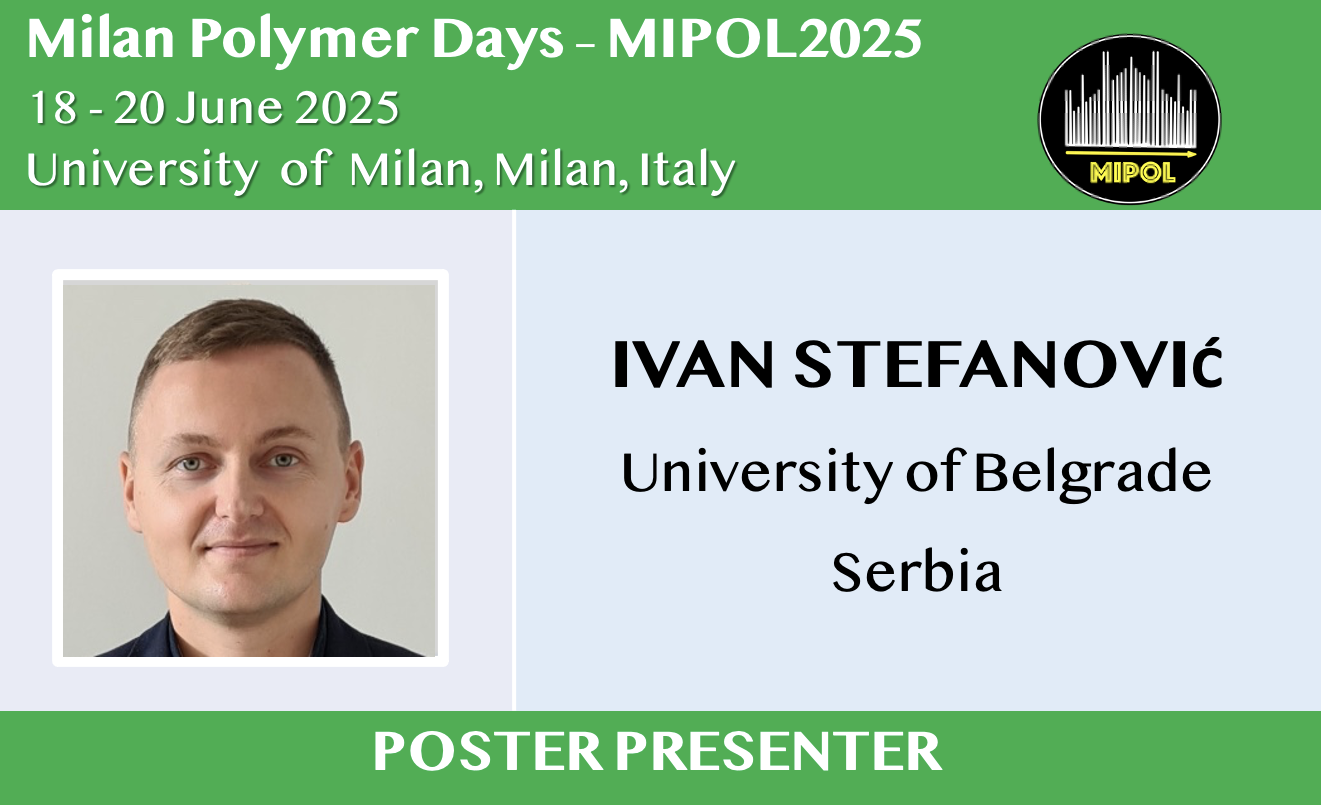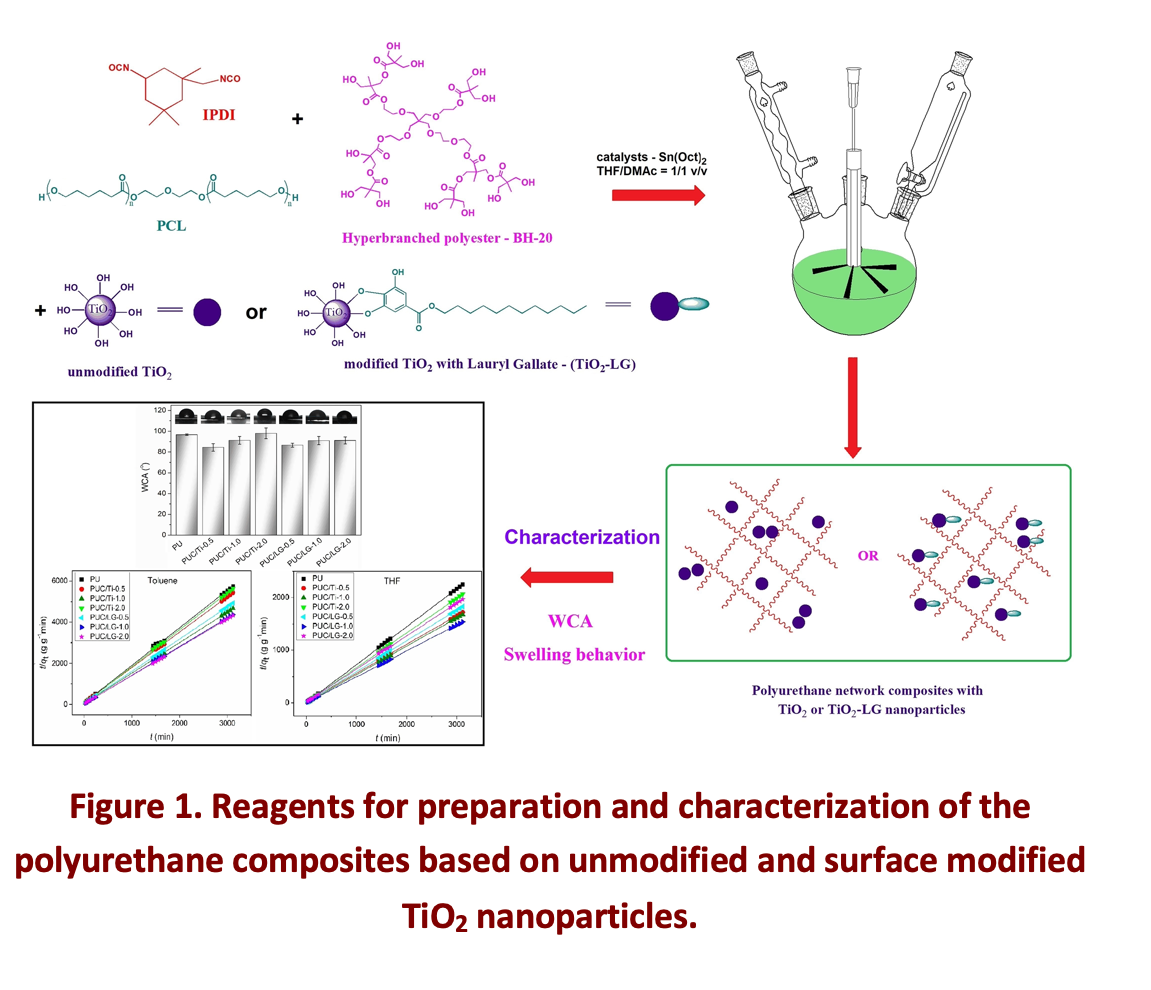Polyurethane composites based on TiO2 nanoparticles: hydrophobicity and swelling behavior
Abstract

Polyurethane composites (PUCs) based on polycaprolactone (PCL), isophorone diisocyanate (IPDI), Boltorn® hyperbranched polyester of the second pseudo generation (BH-20) and unmodified or surface-modified TiO2 nanoparticles with lauryl gallate, were synthesized (Fig. 1). PUCs were prepared by incorporation of different amount (0.5, 1 and 2 wt.%) of unmodified or surface-modified TiO2 nanoparticles into a polyurethane network (PU) [1,2]. The hydrophobicity and swelling behavior of pure PU and PUCs were investigated.
Water contact angle (WCA) values of PUC samples, prepared with unmodified and modified TiO2 nanoparticles are in the range from 84.4 to 97.9° and from 86.6 to 91.1°, respectively. From the results presented in Fig.1 it can be observed that majority of the synthesized PUCs have WCA lower than WCA of the neat PU (96.7°). Clearly, WCA of examined samples depends on the chemical composition and roughness of the investigated solid surface [1].
The pseudo-second-order kinetic model was applied to describe the kinetics of swelling of the neat PU and prepared PUCs in three different liquids (water, THF and toluene), and some of the results are shown in Fig. 1. The diffusion mechanism of water through the neat PU and PUC/Ti-0.5 fits the pseudo-Fickian model, while non-Fickian diffusion mechanism describes diffusion of water through all other examined PUCs. Results obtained by swelling measurements were also applied to calculate diffusion coefficient (D) of water, THF and toluene through the prepared samples. The increase of D values for these solvents can be attributed to the lower crosslinking density of PUCs compared to the neat PU. The obtained D values are the highest for THF because the swelling of samples was the largest in it, which resulted in the creation of greater voids in samples through which THF can pass. The obtained PUCs may potentially be used as protective coatings [1].

References
- I.S. Stefanović, J.V. Džunuzović, E.S. Džunuzović, D.V. Randjelović, V.B. Pavlović, A. Basagni, C. Marega Coatings 2025, 15, 231.
- J.V. Džunuzović, I.S. Stefanović, E.S. Džunuzović, T.S. Kovač, D.P. Malenov, A. Basagni, C. Marega Polymers 2024, 16, 1812.
Acknowledgments
This research was funded by Ministry of Science, Technological Development and Innovation of Republic of Serbia (contract no.: 451-03-66/2024-03/200026, 451-03-65/2024-03/200135 and 451-03-66/2024-03/200287) and the Science Fund of the Republic of Serbia, program PRISMA, grant no. 5354, Multifunctional visible-light-responsive inorganic-organic hybrids for efficient hydrogen production and disinfection—HYDIS.

